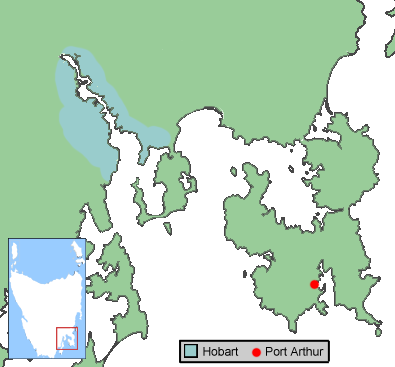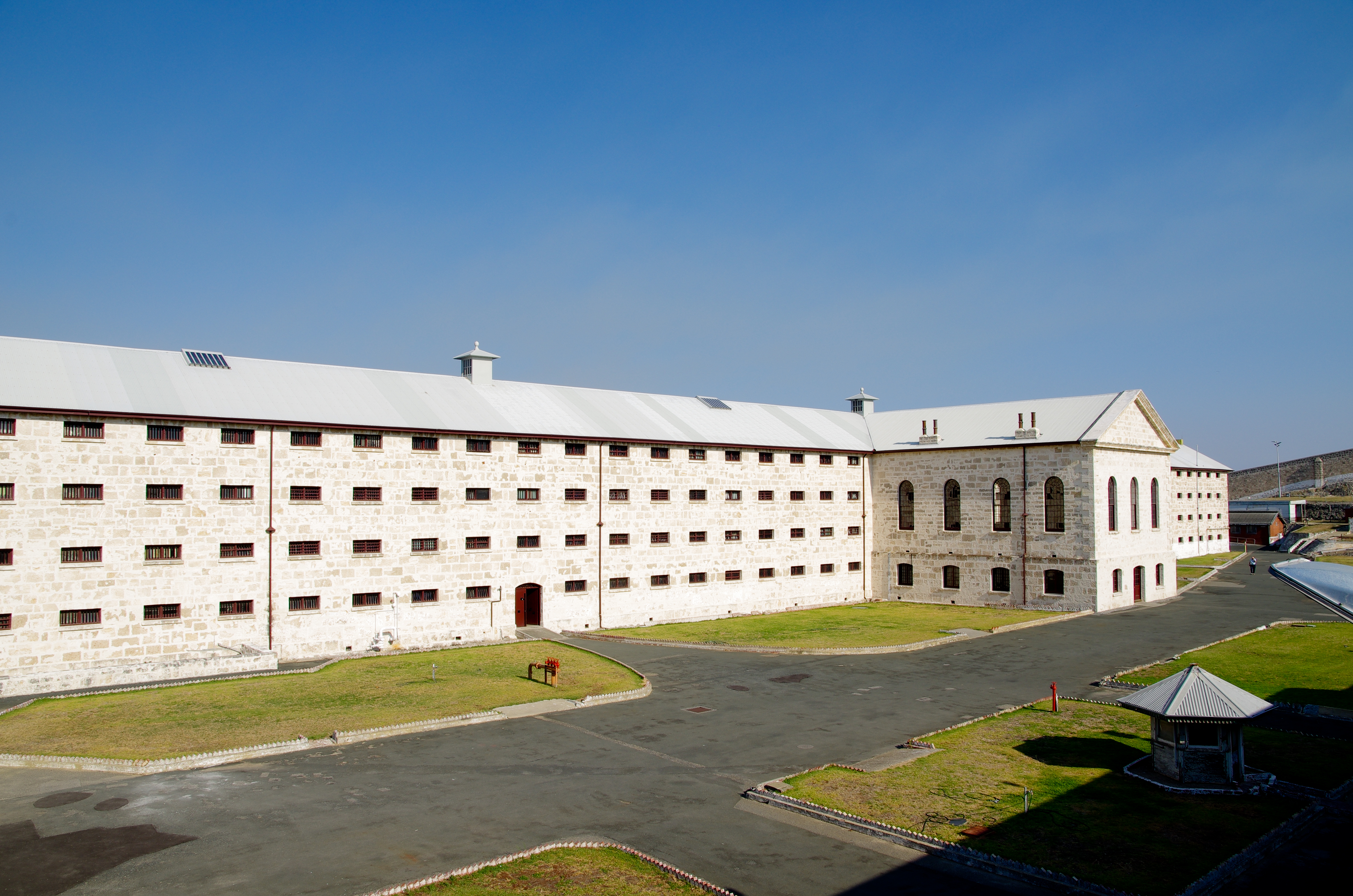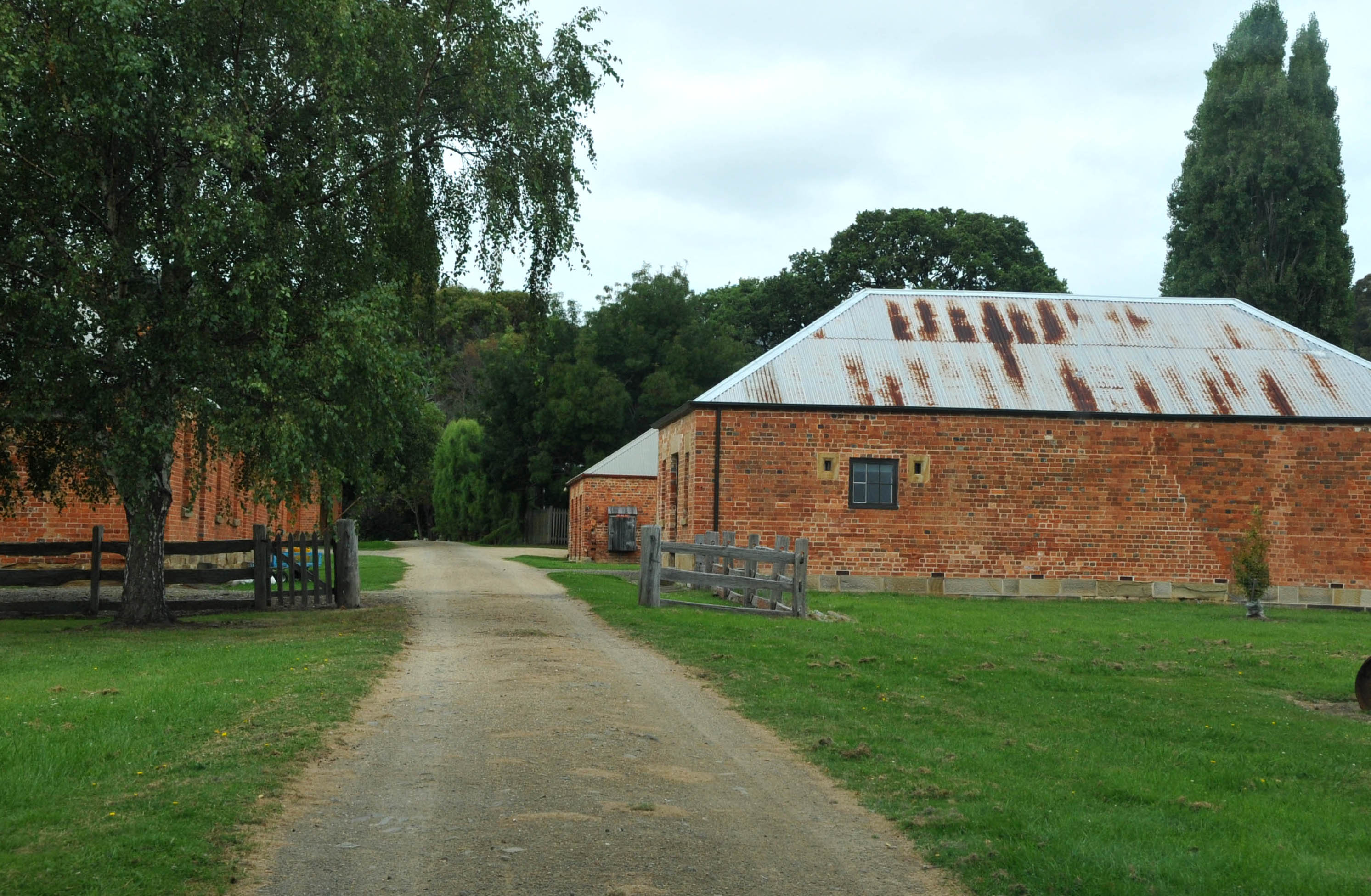|
Australian Convict Sites
Australian Convict Sites is a World Heritage property consisting of 11 remnant penal sites originally built within the British Empire during the 18th and 19th centuries on fertile Australian coastal strips at Sydney, Tasmania, Norfolk Island, and Fremantle; now representing "...the best surviving examples of large-scale convict transportation and the colonial expansion of European powers through the presence and labour of convicts." These properties were all individually included on the Australian National Heritage List before inclusion on the World Heritage list. Preparations began in 1995, and a World Heritage nomination was first made in January 2008. That attempt failed, and the nomination was subsequently reworked. Penal sites included The 11 penal sites constituting the Australian Convict Sites World Heritage listed property are: # Kingston and Arthur's Vale Historic Area ("KAVHA"), Norfolk Island. # Old Government House and Domain ("Old Government House"), New S ... [...More Info...] [...Related Items...] OR: [Wikipedia] [Google] [Baidu] |
Port Arthur, Tasmania
Port Arthur is a town and former convict settlement on the Tasman Peninsula, in Tasmania, Australia. It is located approximately southeast of the state capital, Hobart. The site forms part of the Australian Convict Sites, a World Heritage property consisting of 11 remnant penal sites originally built within the British Empire during the 18th and 19th centuries on fertile Australian coastal strips. Collectively, these sites, including Port Arthur, are described by UNESCO as "... the best surviving examples of large-scale convict transportation and the colonial expansion of European powers through the presence and labour of convicts." In 1996, the town was the scene of the Port Arthur Massacre, the worst instance of mass murder in post-colonial Australian history. Location Port Arthur is located about southeast of the state capital, Hobart, on the Tasman Peninsula. The scenic drive from Hobart, via the Tasman Highway to Sorell and the Arthur Highway to Port Arthur, takes a ... [...More Info...] [...Related Items...] OR: [Wikipedia] [Google] [Baidu] |
Brickendon Estate
Brickendon Estate is a farm estate located in Longford, Tasmania. It is one of the two main ancestral homes (with Woolmers) of the Archer family, prominent local pioneers and politicians. Founded in 1824, Brickendon Estate was one of the first (and most successful) farms in the area. Like most Archer estates, it is named after a location in England, in this case, the village of Brickendon in East Hertfordshire. It consists of a village and manor house, as well as a working farm. The main manor was built in 1829-1830 in a Georgian style. It has been lived on and operated by direct descendants of the Archer family since it was established, and is still a working farm. It is listed on the Tasmanian Heritage Register. Along with Woolmers Estate, Brickendon was inscribed onto the Australian National Heritage List in November 2007 as being of outstanding national significance because of their close association with the convict consignment system and in July 2010 included on th ... [...More Info...] [...Related Items...] OR: [Wikipedia] [Google] [Baidu] |
Modern Era
The term modern period or modern era (sometimes also called modern history or modern times) is the period of history that succeeds the Middle Ages (which ended approximately 1500 AD). This terminology is a historical periodization that is applied primarily to European and Western history. The modern era can be further divided as follows: * The early modern period lasted from c. AD 1500 to 1800 and resulted in wide-ranging intellectual, political and economic change. It brought with it the Age of Enlightenment, the Industrial Revolution and an Age of Revolutions, beginning with those in America and France and later spreading in other countries, partly as a result of upheavals of the Napoleonic Wars. * The late modern period began around 1800 with the end of the political revolutions in the late 18th century and involved the transition from a world dominated by imperial and colonial powers into one of nations and nationhood following the two great world wars, World War I and W ... [...More Info...] [...Related Items...] OR: [Wikipedia] [Google] [Baidu] |
Age Of Enlightenment
The Age of Enlightenment or the Enlightenment; german: Aufklärung, "Enlightenment"; it, L'Illuminismo, "Enlightenment"; pl, Oświecenie, "Enlightenment"; pt, Iluminismo, "Enlightenment"; es, La Ilustración, "Enlightenment" was an intellectual and philosophical movement that dominated Europe in the 17th and 18th centuries with global influences and effects. The Enlightenment included a range of ideas centered on the value of human happiness, the pursuit of knowledge obtained by means of reason and the evidence of the senses, and ideals such as liberty, progress, toleration, fraternity, and constitutional government. The Enlightenment was preceded by the Scientific Revolution and the work of Francis Bacon, John Locke, and others. Some date the beginning of the Enlightenment to the publication of René Descartes' ''Discourse on the Method'' in 1637, featuring his famous dictum, ''Cogito, ergo sum'' ("I think, therefore I am"). Others cite the publication of Isaac Newto ... [...More Info...] [...Related Items...] OR: [Wikipedia] [Google] [Baidu] |
Forced Migration
Forced displacement (also forced migration) is an involuntary or coerced movement of a person or people away from their home or home region. The UNHCR defines 'forced displacement' as follows: displaced "as a result of persecution, conflict, generalized violence or human rights violations". A forcibly displaced person may also be referred to as a "forced migrant", a "displaced person" (DP), or, if displaced within the home country, an "internally displaced person" (IDP). While some displaced persons may be considered as refugees, the latter term specifically refers to such displaced persons who are receiving legally-defined protection and are recognized as such by their country of residence and/or international organizations. Forced displacement has gained attention in international discussions and policy making since the European migrant crisis. This has since resulted in a greater consideration of the impacts of forced migration on affected regions outside Europe. Various i ... [...More Info...] [...Related Items...] OR: [Wikipedia] [Google] [Baidu] |
Western Australia
Western Australia (commonly abbreviated as WA) is a state of Australia occupying the western percent of the land area of Australia excluding external territories. It is bounded by the Indian Ocean to the north and west, the Southern Ocean to the south, the Northern Territory to the north-east, and South Australia to the south-east. Western Australia is Australia's largest state, with a total land area of . It is the second-largest country subdivision in the world, surpassed only by Russia's Sakha Republic. the state has 2.76 million inhabitants percent of the national total. The vast majority (92 percent) live in the south-west corner; 79 percent of the population lives in the Perth area, leaving the remainder of the state sparsely populated. The first Europeans to visit Western Australia belonged to the Dutch Dirk Hartog expedition, who visited the Western Australian coast in 1616. The first permanent European colony of Western Australia occurred following the ... [...More Info...] [...Related Items...] OR: [Wikipedia] [Google] [Baidu] |
Fremantle Prison
Fremantle Prison, sometimes referred to as Fremantle Gaol or Fremantle Jail, is a former Australian prison and World Heritage Site in Fremantle, Western Australia. The site includes the prison cellblocks, gatehouse, perimeter walls, cottages, and tunnels. It was initially used for convicts transported from Britain, but was transferred to the colonial government in 1886 for use for locally-sentenced prisoners. Royal Commissions were held in 1898 and 1911, and instigated some reform to the prison system, but significant changes did not begin until the 1960s. The government department in charge of the prison underwent several reorganisations in the 1970s and 1980s, but the culture of Fremantle Prison was resistant to change. Growing prisoner discontent culminated in a 1988 riot with guards taken hostage, and a fire that caused $1.8 million worth of damage. The prison closed in 1991, replaced by the new maximum-security Casuarina Prison. The prison was administered by a comp ... [...More Info...] [...Related Items...] OR: [Wikipedia] [Google] [Baidu] |
Cockatoo Island (New South Wales)
Cockatoo Island is a UNESCO World Heritage Site at the junction of the Parramatta and Lane Cove River in Sydney Harbour, New South Wales, Australia. Cockatoo Island is the largest of several islands that were originally heavily timbered sandstone knolls. Originally the Island rose to above sea level and was but it has been extended to and is now cleared of most vegetation. Called ''Wa-rea-mah'' by the Indigenous Australians who traditionally inhabited the land prior to European settlement, the island may have been used as a fishing base, although physical evidence of Aboriginal heritage has not been found on the island. Between 1839 and 1869, Cockatoo Island operated as a convict penal establishment, primarily as a place of secondary punishment for convicts who had re-offended in the colonies. Cockatoo Island was also the site of one of Australia's biggest shipyards, operating between 1857 and 1991. The first of its two dry docks was built by convicts. Listed on the Nat ... [...More Info...] [...Related Items...] OR: [Wikipedia] [Google] [Baidu] |
Coal Mines Historic Site
Coal Mines Historic Site was, for a period of 15 years (1833–48), a convict probation stationAustralian Department of Environment, Water, Heritage, and the Arts "Coal Mines Historic Site" webpages 5 August 2010 and the site of 's (then 's) first operational , "serving as a place of punishment for the 'worst class' of convic ... [...More Info...] [...Related Items...] OR: [Wikipedia] [Google] [Baidu] |
Port Arthur Historic Site
Port Arthur is a town and former convict settlement on the Tasman Peninsula, in Tasmania, Australia. It is located approximately southeast of the state capital, Hobart. The site forms part of the Australian Convict Sites, a World Heritage property consisting of 11 remnant penal sites originally built within the British Empire during the 18th and 19th centuries on fertile Australian coastal strips. Collectively, these sites, including Port Arthur, are described by UNESCO as "... the best surviving examples of large-scale convict transportation and the colonial expansion of European powers through the presence and labour of convicts." In 1996, the town was the scene of the Port Arthur Massacre, the worst instance of mass murder in post-colonial Australian history. Location Port Arthur is located about southeast of the state capital, Hobart, on the Tasman Peninsula. The scenic drive from Hobart, via the Tasman Highway to Sorell and the Arthur Highway to Port Arthur, takes ... [...More Info...] [...Related Items...] OR: [Wikipedia] [Google] [Baidu] |
Cascades Female Factory
The Cascades Female Factory, a former Australian workhouse for female convicts in the penal colony of Van Diemen's Land, is located in Hobart, Tasmania. Operational between 1828 and 1856, the factory is now one of the 11 sites that collectively compose the Australian Convict Sites, listed on the World Heritage List by UNESCO. Collectively the Australian Convict Sites represent an exceptional example of the forced migration of convicts and an extraordinary example of global developments associated with punishment and reform. Representing the female experience, the Cascades Female Factory demonstrates how penal transportation was used to expand Britain's spheres of influence, as well as to punish and reform female convicts. Now operational as a museum and tourist attraction, the site is managed by the Port Arthur Historic Site Management Authority. The Cascades Female Factory Historic Site consists of three of the original five yards. It is open every day (except Christmas) ... [...More Info...] [...Related Items...] OR: [Wikipedia] [Google] [Baidu] |
Great North Road (New South Wales)
The Great North Road is a historic road that was built to link early Sydney, in the Colony of New South Wales, now Australia, with the fertile Hunter Valley to the north. Built by convicts between 1825 and 1836, it traverses over of the rugged terrain that hindered early agricultural expansion. The road is of such cultural significance it was included on the Australian National Heritage List on 1 August 2007 as a ''nationally significant example of major public infrastructure developed using convict labour'' and on the UNESCO World Heritage list as amongst: " .. the best surviving examples of large-scale convict transportation and the colonial expansion of European powers through the presence and labour of convicts." The road was an engineering triumph, with some sections constructed to a notably high standard. It was not an unqualified success in practical terms. Apart from the steep grades, there was a lack of water and horse feed along the route. For these reasons it quic ... [...More Info...] [...Related Items...] OR: [Wikipedia] [Google] [Baidu] |








